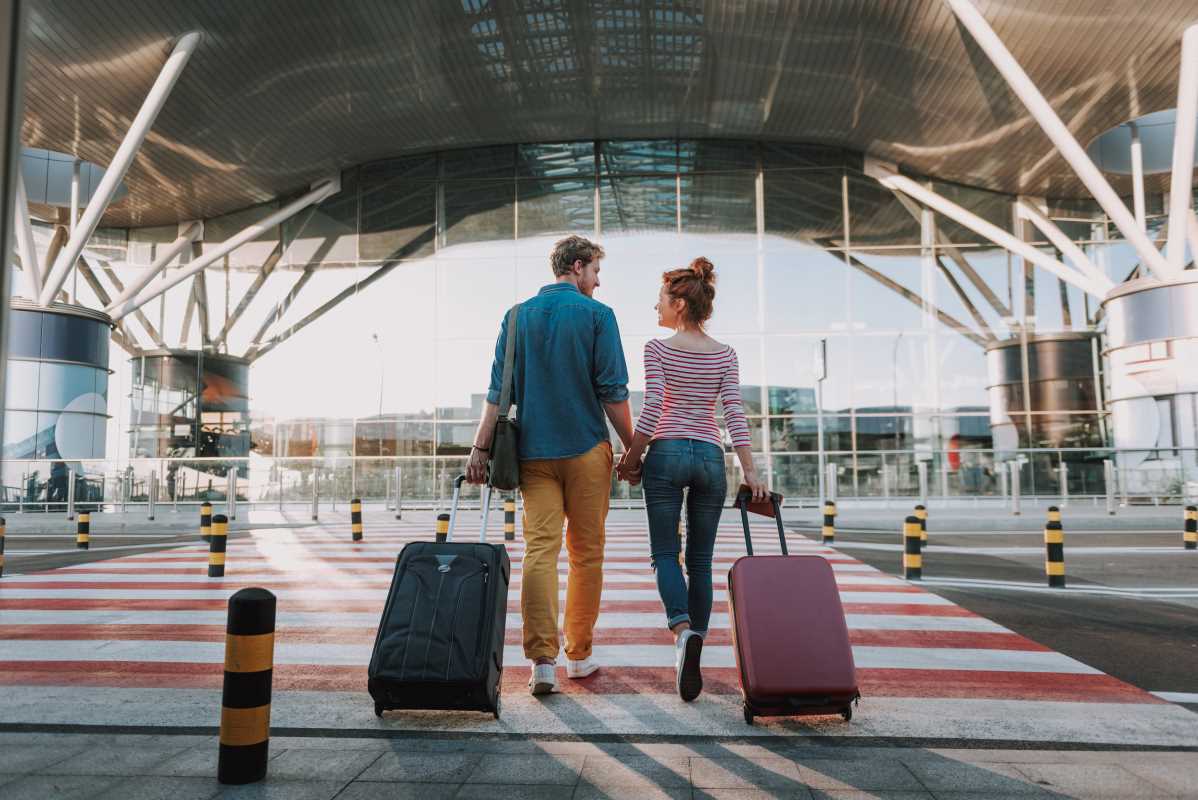Traveling the world is one of life’s greatest joys. From exploring iconic landmarks to tasting authentic cuisines, the experience of a new culture is always unforgettable. That said, nothing can deflate the excitement of a trip faster than battling endless crowds or waiting in seemingly never-ending lines. Modern travel often comes with the added challenge of overtourism, where famous sights can feel more like chaotic scenes of people than peaceful moments of awe. But what if you could dodge all that and explore your dream destinations almost stress-free? The secret lies in perfect timing.
Timing isn’t just about when to book your flights or hotels (though that helps, too). It’s also about knowing the best months to visit a city, the least crowded times to hit popular attractions, and how to work your schedule to your advantage. With some careful planning and a few insider secrets, you can become a master at avoiding the crowds, saving time, and making the most of your adventures. Here’s how.
1. Travel During the Shoulder Seasons
The term "shoulder season" refers to the time right before or after a destination’s peak travel period. This is often the best time to visit a place because you enjoy great weather and smaller crowds but without the sky-high prices.
Why Shoulder Seasons Are Ideal:
- Fewer Crowds: Popular attractions are far less congested, giving you space to explore at a relaxed pace.
- Better Deals: Flights, hotels, and tours can be significantly cheaper compared to the peak season.
- Mild Weather: You’re likely to avoid the extreme heat or cold that often comes with peak or off-peak seasons.
Examples:
- Visit Paris in April or October instead of the summer months.
- Tour the Greek Islands in late September when the weather is still warm but visitor numbers have dropped.
- Plan a trip to Costa Rica in May or November, right before the rainy season hits at full force.
2. Book Attractions for the Early Morning or Late Afternoon
One of the best ways to avoid crowds is to plan your visits for when most travelers aren’t awake yet or are winding down their day. Early mornings and late afternoons are golden windows for visiting top attractions.
The Benefits:
- Peaceful Mornings: Attractions are quieter, and you might even get the chance to snap some people-free photos.
- Amazing Lighting: The soft morning or late afternoon sunlight is perfect for photographs.
- More Personal Space: Whether you’re walking through a historic site or enjoying a guided tour, these off-hours make the experience far more enjoyable.
How to Do It:
- For landmarks like the Colosseum in Rome or the Taj Mahal in India, aim to arrive right when they open.
- Reserve tickets for popular museums (like the Louvre or the British Museum) during their evening extended hours.
3. Choose Lesser-Known Destinations
Sure, everyone dreams of seeing the Eiffel Tower or visiting the Great Wall of China, but there’s a whole world of amazing (and less crowded) places to discover. Many lesser-known destinations are just as incredible as their world-famous counterparts but without the massive hordes of tourists.
How to Find Hidden Gems:
- Explore smaller towns or villages near major attractions. For example, instead of Santorini, try the charming island of Folegandros in Greece.
- Look for alternative spots that have similar features. For instance, skip Iceland’s Blue Lagoon for the quieter Myvatn Nature Baths.
- Do some digging on travel blogs or social media to uncover under-the-radar destinations.
4. Time Your Flights and Transportation Strategically
Smarter timing doesn’t just apply to sightseeing; it also makes traveling itself much smoother. Certain days and times make a huge difference in avoiding crowds while flying or using public transport.
When to Book Flights:
- Midweek Departures: Flying on Tuesday or Wednesday often means lower ticket prices and quieter airports.
- Early or Late Flights: Take the first flight in the morning or a red-eye to avoid midday rushes.
For Public Transit:
- Avoid morning and evening rush hours when commuting locals clog buses, trains, and subways.
- If traveling by train, booking mid-morning or early-afternoon tickets usually ensures fewer crowds.
5. Visit During Local Off-Peak Hours
It sounds basic, but avoiding the busiest hours doesn’t always occur to travelers. Attractions have daily rhythms, with some times far busier than others. Figuring out those patterns is key to skipping the long lines.
Examples:
- Disney parks are significantly quieter early in the morning or late at night after families with young children leave.
- Markets like the Grand Bazaar in Istanbul are livelier in the late morning; visit as they open for smaller crowds.
- Beaches in places like Hawaii or Bali are serene at sunrise but pack up by mid-afternoon.
Pro tip? Some attractions also offer “skip-the-line” options or timed-entry tickets that allow you to bypass general admission crowds altogether.
6. Travel Against the Grain
Most travelers follow the same patterns, whether it’s weekend travel or hitting big-name spots first thing post-breakfast. If you can go against those patterns, you’ll find lighter crowds and fewer traffic jams.
Tactics to Try:
- Travel during weekdays instead of weekends, when popular destinations are flooded with local and international visitors.
- If you’re on a road trip, start driving early or after 6 p.m. to avoid rush-hour traffic on popular routes.
- Tour high-traffic spots (like Angkor Wat or Machu Picchu) in reverse order or explore the less popular sections first.
7. Leverage Touring Apps and Guided Options
Well-timed tours and apps are another great way to beat crowds. Some tour operators have insider knowledge on the best times to visit certain attractions, while apps can provide real-time updates on crowd levels.
Handy Apps and Tools:
- Visit A City: Offers curated itineraries with the best times to hit major attractions.
- Google Maps: The “Popular Times” feature shows when places are usually busiest.
- Guided Tours: Choose small-group or private tours that operate off-peak to ensure a more intimate experience.
8. Be Mindful of Holidays and Local Events
Holidays can be tricky for travel. While some offer unique cultural experiences, others can mean packed attractions and higher costs.
Plan Around These:
- Avoid Major Holidays: Tourism hotspots will be busier during global holidays like Christmas, New Year’s, and Easter.
- Watch for Local Events: Big festivals, fairs, or events can bring in crowds, even to more remote destinations.
- Use the Days Before or After: If a site is busy right before a local holiday, visit a day before or after when it’s typically quieter.
9. Book Tickets in Advance
Most top attractions now allow or even require timed-entry tickets. Booking in advance not only secures your spot but also helps you plan your trip efficiently.
How It Helps:
- You won’t have to wait in long lines for popular attractions.
- Many venues offer discounted prices for early-booked tickets.
- Timed entry allows you to enjoy a more leisurely visit, even at crowded spots.
10. Be an Early Bird or Night Owl
There’s a special magic to exploring when the world is still waking up or winding down. Whether it’s catching a stunning sunrise at Angkor Wat or having a quiet dinner at a late-night café in Paris, odd hours can give you rare moments of tranquility.
Benefits of Odd Hours:
- Early Mornings: Quiet streets, better photos, and fewer crowds at major attractions.
- Late Nights: Some spots, like the Tokyo Skytree or the Eiffel Tower, offer unique nighttime vibes.
 (Image via
(Image via





